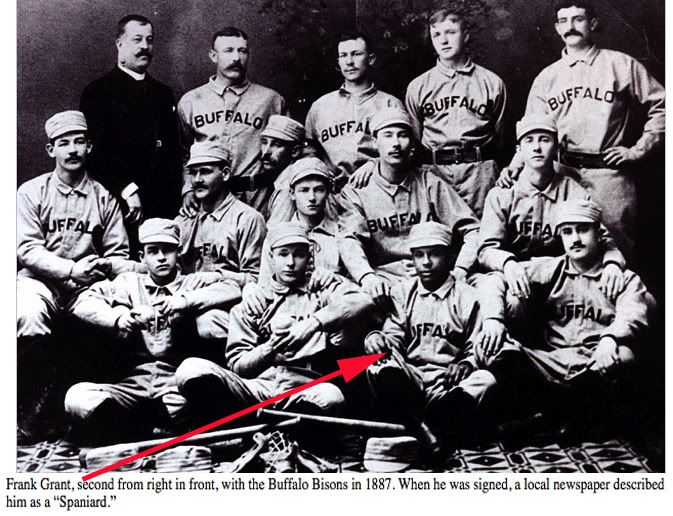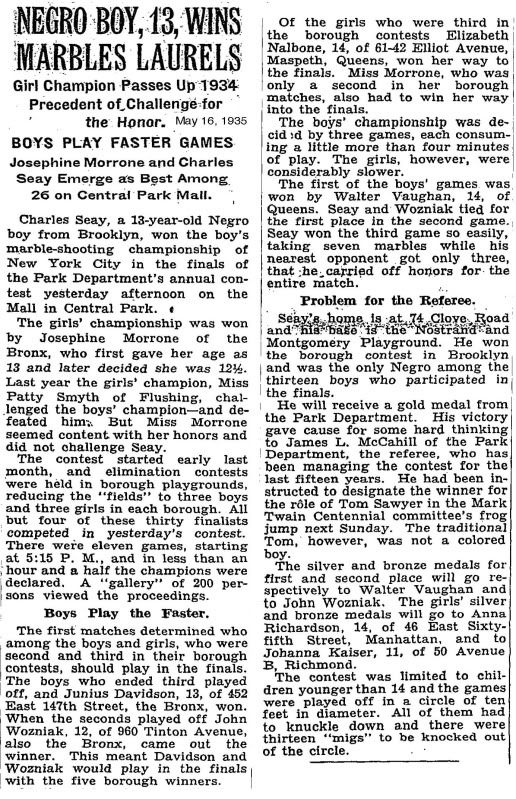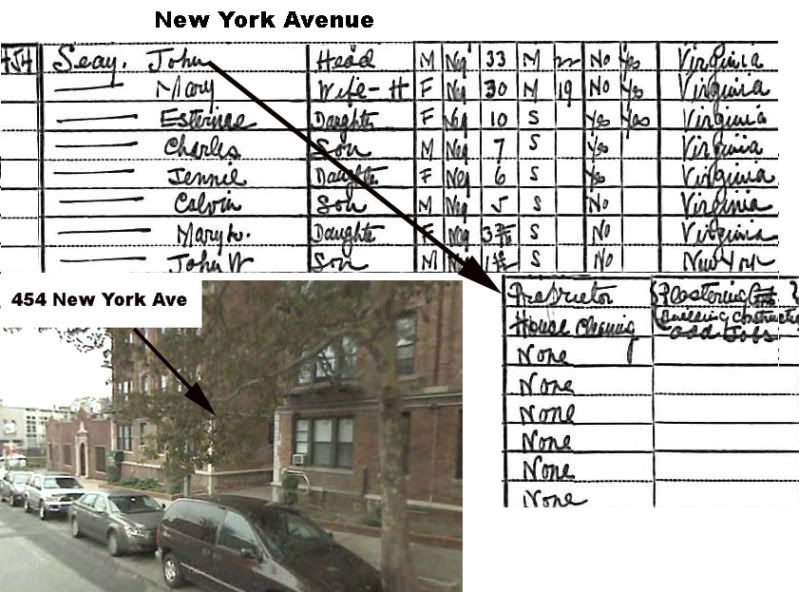On June 28, Samuel Battle, a 6-foot-2, 285-pound 28-year-old who lived in Clinton (now known as Hell’s Kitchen), began his duties as Greater New York’s first black police officer (two who served the former city of Brooklyn had been absorbed into the metropolitan force earlier).
Appointed by Commissioner Rhinelander Waldo, Battle recalled:
My friends, and some that were not friends, said it was ridiculous: that I could never be appointed because of my color. But I said that what one could do another could, and was not willing to admit any inferiority. I stuck to it and got the appointment on my merits.
Samuel Jesse Battle (b. January 16, 1883 in New Bern, North Carolina) (died August 7, 1966) was the first black police officer in the city of Brooklyn, later New York City. After attending segregated schools in North Carolina, Battle moved north, first to Connecticut, then to New York City, where he took a job as a train porter and began studying for the New York City Police Department civil service exam. He was sworn in on March 6, 1911.
His brother-in-law was Patrolman Moses P. Cobb, who started working for the Brooklyn Police force in the early 1890s before the unification of NYC and acted as Battle's mentor. "Big Sam" as he was known - 6'3", / 280 pounds, earned the respect of his fellow Officers after saving ones life in the early 1920s. They subsequently voted to allow him into the Sargent's academy. As the NYPD's first black Lieutenant, during the intense Harlem Riots of 1935 - after 3 days of violence he circulated fliers of himself with the young boy smiling who had allegedly been murdered in the basement of the Kress Department store.
He joined the force in 1911, assigned first to San Juan Hill, the neighborhood where Lincoln Center is today, which preceded Harlem as one of the key African American neighborhoods in Manhattan. He was soon moved to Harlem, as the African American population there grew. He would later become the first African American police sergeant (1926), lieutenant (1935), and the first African American parole commissioner (1941).
In 1941, Battle began work as a parole commissioner, working with delinquent youths in Harlem. He initiated rehabilitation programs, such as summer camps and sports activities for the youth of Harlem. During a 1943 race riot, triggered by the shooting of an African-American suspect by a white police officer, Battle, at the request of New York Mayor Fiorello LaGuardia, was called in to quell the Harlem area where the riot erupted. Battle retired as parole commissioner in 1951 but remained active in community activities for the Harlem area.
* On August 4, 2009, the intersection of West 135th St and Lenox Avenue in Harlem was officially renamed in his honor.
Wednesday, February 9, 2011
Sanuel Battle
Posted by David Ballela at 7:46 AM 1 comments
Labels: black police officers, samuel battle
History Of Black Police Officers In New York
Posted by David Ballela at 7:30 AM 0 comments
Labels: black police officers
The San Juan Hill Section Of Manhattan 2
Posted by David Ballela at 7:27 AM 0 comments
Labels: san juan hill
Saturday, February 5, 2011
Negro League History: From Baseball Fever
Posted by David Ballela at 1:00 PM 0 comments
Labels: baseball
More On The Cuban Giants
cuban-giants
from wikipedia
The Cuban Giants were the first African-American professional baseball club.
The team was originally formed in 1885 at the Argyle Hotel, a summer resort in Babylon, New York. The team was so skilled in the game, and achieved victory over so many of the nearby amateur "white" teams that they attracted the attention of a promoter, Walter Cook. To appeal to a broader audience, Cook styled them the "Cuban Giants," a common ploy to avoid referring to the players as "black" or "Negro." There were no Cubans on the Cuban Giants. The team remained one of the premier Negro league teams for nearly 20 years.
The team went on to become the "world colored champions" of 1887 and 1888, and spawned imitators.
Though there were no actual Cuban men on the Cuban Giants, the team had played in Cuba in the fall or winter of 1885–1886.
In the September 1938 issue of Esquire Magazine, Sol White recounts the early days of the team: "…when that first team began playing away from home, they passed as foreigners—Cubans, as they finally decided—hoping to conceal the fact that they were just American Negro hotel waiters and talked a gibberish to each other on the field which, they hoped, sounded like Spanish" (Coover, 3).
It was a popular practice in the Sporting press at the time to refer to African-American players as Cuban, Spanish, or Arabian instead of admitting to the truth.
In 1896 ownership issues would lead to a new offshoot team being created, calling themselves Cuban X-Giants. The older owner's team was then referred to as Genuine Cuban Giant or Original Cuban Giants.
There are two different tales on how the Cuban Giants got their start. According to Sol White, a player who would join the Cuban Giants several years after they got started, Frank P. Thompson, a headwaiter at the Argyle Hotel in Babylon, Long Island, would regularly play baseball with the other waiters that soon became an attraction for the hotel’s guests. Before long, he signed 3 star players from the semi-pro black team, the Philadelphia Orions, and the team went on the road to contend any team who would play them.
However, according to an interview with Thompson himself published on October 15, 1887 in the "New York Age," an African-American newspaper, the majority of the ballplayers did not come from the hotel's staff, but from several other black teams. In Philadelphia, Frank P. Thompson organized the Keystone Athletics in May 1885, and in July they were transferred to Babylon, L.I. By August the Athletics had partnered with the Manhattans from Washington, D.C. and the Philadelphia Orions, and it was the coming together of these three teams that created the Cuban Giants. Walter Cook from Trenton, New Jersey was their white owner and Stanislaus Kostka Govern was their black manager.
Govern, who was a native of St. Croix, Virgin Islands, understood how a team could financially prosper in the Caribbean at this time. His own team, the Manhattans, had been playing in Cuba since 1882. Thompson had a connection to Henry Flagler through Osborn D. Seavey, and once the team was through with their Cuban winter tour, they came to St. Augustine, Florida to entertain the guests at the newly forming resort hub.
The Cuban Giants would come back to Florida many times during their existence. During the St. Augustine years, Thompson put together an organization called the Progressive Association of the United States. Thompson was the president of the Association, and Govern acted as secretary. Thompson used his position to conduct annual sermons for the Cuban Giants and any citizens who wanted, to come together against prejudice in the South. These sermons were widely well received and inspired others to join him in the cause.
In 1886, Walter E. Simpson bought the team and gave them a home at the Chambersburg Grounds in Trenton, New Jersey. Two months later, he would sell the team to Walter I. Cook.
Cook came from a wealthy family and was generous to the team with his money, especially when it came to illness or injuries, and he is known as the Giant’s most well-liked owner. They even played a benefit game for him in which they donated their pay to him. J.M. Bright purchased the Cuban Giants from Cook in June 1887. Bright was able to get them into the Middle States League in 1889, as joining a league was something the team had been trying to do for some time. However, Bright was not nearly as well-liked as Cook, and had to deal often with renegade players. This would be the teams last year in Trenton. In 1890 the entire team fled and played as the Colored Monarchs of York, Pennsylvania. In 1891, the heart of the team fled to their rival, Ambrose Davis’ Gorhams of New York City, then called the Big Gorhams.
This dismantling and reassembling of the team became routine year after year until 1896, when E.B. Lamar Jr. from Brooklyn bought the team from Bright, renaming them the Cuban X-Giants. Bright responded by putting together an inferior team calling them the “Genuine Cuban Giants” or the “Original Cuban Giants.” The Cuban X-Giants had a successful ten year run as one of the best black teams in the East.
In 1885, the year of the inception of the Cuban Giants, Henry Flagler built the Ponce de Leon Hotel in St. Augustine, Florida. Many members of the Cuban Giants worked at the hotel and played exhibition games as entertainment for the patrons of the hotel (Malloy). This is a point of contention, because some people say that the Cuban Giants actually worked at the hotel and began their baseball careers as something fun to do after they got off work, and others say that they didn't actually play at the hotel until their team was actually established. What is known though is that "playing for the wealthy clientele that frequented Flagler's empire kept the team afloat until they headed... to... Trenton, New Jersey" (Heaphy 16).
During their first summer season, 1886, the Cuban Giants played a game at a field in Trenton, NJ. At the time, Trenton did not have a hometown baseball team. The Cuban Giants gladly took the space, and Trenton became their “home base” (Malloy). Soon after moving to Trenton, a man named Walter Cook took over the job of booking games for the team. Cook also established salaries for the players (Heaphy 16). Walter Cook used the position that the player filled to determine how much they earned. The average pay for pitchers and catchers was about $18.00 per week, plus expenses. Outfielders made about $15.00 per week, and infielders made about $12.00 per week. These salaries were much more money than African Americans could have expected to make in a regular job at the time (Heaphy 16). Today, these salaries seem very low. In 2006, the minimum baseball player’s salary was $380,000, while the average salary was $2,699,292 (mlbplayers.mlb.com).
“The Giants…played a number of winters in Havana, Cuba” (Heaphy 17). The Giants had discovered that the key to being financially stable was to play baseball all year round. Cuba was a perfect place for them to play their winter seasons, because they could avoid the cold temperatures that were common in New Jersey in the winter, and they drew huge crowds when they played in Havana. They were so popular in fact that they played “…in front of as many as 15,000 fans” (Heaphy 17). This is very impressive for the late 19th century, considering that the average attendance per game for the Philadelphia Baseball Grounds, a popular baseball venue at the time, in 1890 was 2,231 per game (baseball-statistics.com).
Some of the prominent players were:
* Ben Boyd
* Frank Grant, infield
* Abe Harrison, shortstop
* Andrew Jackson
* Oscar Jackson
* William Jackson
* John Nelson, pitcher
* William Selden, pitcher
* Arthur Thomas
* Sol White, infield
* Clarence Williams (baseball player), catcher
* George Williams (Negro Leagues infielder), infielder and captain
Posted by David Ballela at 12:44 PM 0 comments
Labels: baseball, cuban giants
Black Baseball’s Rich Legacy
black-baseball-times
an excerpt from a 2008 nytimes article by Kevin Coyne
ON a fine September night in 1946, in a ballpark out on the marshy edge of Newark’s East Ward, the Newark Eagles — one of the two professional baseball teams, one black and one white, that shared Ruppert Stadium — trotted onto the field in jerseys so new and bright they looked almost incandescent under the lights.
The players were black, the uniforms white. The team’s co-owner, Effa Manley, had just spent $700 on a new set, about as much as she paid her best players each month. It was the Eagles’ first time in the Negro World Series, and she wanted them to look the part of champions.
The stands were packed with both dignitaries and ordinary fans, black and white alike, and the field was dense with players on their way to the National Baseball Hall of Fame: Monte Irvin, Larry Doby, Leon Day and Manager Biz Mackey for the Eagles; Satchel Paige, Hilton Smith and Willard Brown for the Kansas City Monarchs. Conspicuously missing was the Monarchs’ shortstop from the previous season, Jackie Robinson, who was playing for the Brooklyn Dodgers’ farm club in Montreal, and was on the verge of rendering moot this whole segregated enterprise.
Sitting in the stands was an old ballplayer, creeping up on 90, who lived at the Y.M.C.A. in nearby Orange, N.J., Ben Holmes. He had brought along a treasure from the earliest days of black baseball: a silver ball awarded in 1888 to the team he played third base for, the Cuban Giants, the first full-time professional black baseball team, when they won an earlier version of the black championship. The heavyweight champion Joe Louis threw out the silver ball to start the game, the opener of the World Series.
“The ’46 series, that’s really the crème de la crème,” said Lawrence D. Hogan, a history professor at Union County College, in Cranford, N.J., and the author of a definitive book on black baseball, “Shades of Glory: The Negro Leagues and the Story of African-American Baseball” (National Geographic, 2006). He has trolled through old records and memorabilia for decades, but Holmes’s silver ball has remained elusive, as if it — like the Negro leagues themselves — disappeared from the earth soon after that series.
“There’s never been any sighting of that ball,” Dr. Hogan said. “It’s the holy grail of black baseball.”
Baseball is thriving today on the outskirts of New York, with a crop of minor-league teams and bustling new stadiums that grew quickly over the last decade or so. But these new teams were planted in fertile ground, inheritors of a rich regional tradition of black baseball — of an era when an archipelago of green diamonds stretched from Bacharach Park in Atlantic City to the Argyle Hotel in Babylon on Long Island to Bulkeley Stadium in Hartford. That was a time when much of America still believed that blacks and whites shouldn’t be neighbors or schoolmates, co-workers or teammates.
Posted by David Ballela at 12:42 PM 0 comments
Labels: baseball
Frank Grant: Breaking The Barrier Before Robinson
In 1886, the Buffalo Bisons, a top minor league baseball team, signed a versatile infielder from Massachusetts named Frank Grant. The next day, a local newspaper announced Grant’s arrival by describing him as “a Spaniard.”
Grant was in fact one of five African-Americans playing in the otherwise all-white minor leagues that year, on teams from Kansas to Connecticut. Their presence was accepted if not widely acknowledged in the 1880’s, passed off with a wink and a nod, a dodge that labeled players like Grant as Spaniards, Portuguese or Arabs.
The ruse did not hide what historians now concede, that some 60 years before Jackie Robinson famously broke organized baseball’s color barrier, integrated teams of white and black athletes played hundreds of professional games. African-Americans even played in the major leagues.
To most Americans, the history of black baseball means the Negro leagues, an enterprising, culturally rich response to the Jim Crow-era segregation in professional baseball. But blacks played professional baseball for decades after the Civil War, long before the Negro National League began in 1920.
On Sunday in Cooperstown, N.Y., the National Baseball Hall of Fame and Museum will induct by special election 17 stars and team owners who predate modern professional baseball’s integration in the mid-1940’s.
Two of the special inductees, Grant and a onetime teammate, Sol White, trace their baseball lives to the most obscure period of black baseball — the 1880’s, the last decade before the game imposed its color barrier.
The recently documented life stories of Grant and White, 19th-century pioneers who dared not be recognized as such, have helped complete the chronicle of the African-American baseball experience. Theirs are the forgotten tales of men rushing to play at the highest professional tier, aware that their immediate offspring would probably be prohibited such an opportunity.
“They are the players who just vanished from baseball’s narrative, like a secret no one talks about,” said the baseball historian Jim Overmyer, who specializes in black baseball. “But it is important to know that they are the beginning of baseball desegregation. Somebody had to do the early heavy lifting, and even if few people know it, these guys were there first.”
Overmyer and another historian of black baseball, Greg Bond, were among 12 members of a committee that voted for the Hall of Fame’s special election.
“It complicates our understanding of race relations in sports to realize that the color barrier was not a natural outcome of mixing races after the Civil War,” Bond said. “The fact is there were a lot of blacks on mostly white teams. The color barrier became a choice people made at the expense of people like Grant and White, who then disappeared.”
The first black professional baseball player is believed to be John Fowler, who used the nickname Bud and played for minor league teams in Lynn and Worcester, Mass., in 1878. Through recommendations from fans, historians and Hall of Fame members, Fowler was among 94 candidates for the special election, but he was not among the final 17.
Through meticulous work, representatives for the Society for American Baseball Research discovered that Fowler was born John Jackson 20 years earlier in central New York, and that he learned to play baseball, in of all places, the village of Cooperstown during the 1860’s.
Fowler played for 18 years in 13 professional leagues, from New England to New Mexico. He was a speedy base stealer who played every position, including pitcher..
Posted by David Ballela at 12:25 PM 0 comments
Labels: baseball
Friday, February 4, 2011
The History Of The Negro Leagues: The Cuban Giants and The Argyle Hotel
Posted by David Ballela at 8:27 AM 0 comments
Labels: baseball
Legends Of The Negro Leagues: Striking Out Jim Crow
Posted by David Ballela at 8:12 AM 0 comments
Labels: baseball
Thursday, February 3, 2011
Edward Strickland
originally from knickerbocker village in December of 2007
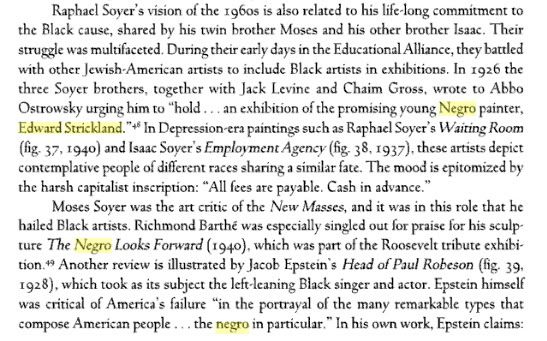 I don't know how long Edward Strickland lived in Knickerbocker before he was evicted (I'm assuming he was), but he seems to have a been an artist of note as referenced here in an article about famed artist Raphael Soyer. I found an exampe of his work, a still life on-line. I'm still looking for more information on him. He's mentioned in this book, Mutual Reflections: Jews and Blacks in American Art
I don't know how long Edward Strickland lived in Knickerbocker before he was evicted (I'm assuming he was), but he seems to have a been an artist of note as referenced here in an article about famed artist Raphael Soyer. I found an exampe of his work, a still life on-line. I'm still looking for more information on him. He's mentioned in this book, Mutual Reflections: Jews and Blacks in American Art
By Milly Heyd. I wonder whether Soyer or his twin brother Moses ever lived in Knickerbocker? It mentions that Raphael displayed his work at the Educational Alliance. 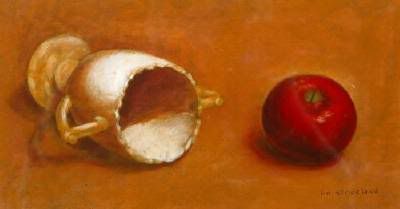
from Strickland's obituary
Bay State Banner
09-24-1998
Edward Strickland, 68, educator, artist, writer
Edward Strickland, professor of the psychology of visual arts, a friend to artists, and himself an artist and writer, died in the early morning of Sept. 16 at Deaconess Hospital. He succumbed to respiratory failure due to lung cancer. He was 68.
Throughout his life, in his painting, as an arts administrator and critic, and as a individual, Dr. Strickland sided with those who were struggling to achieve equity in society. He was generous with his time on behalf of such efforts, even though it took him away from his studio where he took an intense pleasure in immersing himself in the …
A woman stands among a smother of foliage, and the leaves around her stir, responsive to her voice. "It's as though she's singing a linden tree into existence," says Edward Strickland, the painter of the scene.
Strickland, through December, is presenting a 40-year retrospective of paintings and drawings in the handsome AAMARP Galleries on the fourth floor of the Ruggles Building of Northeastern University, at 11 Leon St. The retrospective represents the broad scope of his interests built on the dual foundations of psychology and the visual arts. An associate professor of psychology at the University of Massachusetts at Boston and former chair of the black studies department, …
Posted by David Ballela at 10:31 AM 0 comments
Labels: edward strickland, knickerbocker village
John Coltrane and Edward Strickland on Coltrane
Edward Strickland is famous in Knickerbocker Village history
an excerpt from an article Strickland wrote about Coltrane in the Atlantic
What Coltrane Wanted
The legendary saxophonist forsook lyricism for the quest for ecstasy
by Edward Strickland
JOHN COLTRANE died twenty years ago, on July 17, 1967, at the age of forty. In the years since, his influence has only grown, and the stellar avant-garde saxophonist has become a jazz legend of a stature shared only by Louis Armstrong and Charlie Parker. As an instrumentalist Coltrane was technically and imaginatively equal to both; as a composer he was superior, although he has not received the recognition he deserves for this aspect of his work. In composition he excelled in an astonishing number of forms--blues, ballads, spirituals, rhapsodies, elegies, suites, and free-form and cross-cultural works.
The closest contemporary analogy to Coltrane's relentless search for possibilities was the Beatles' redefinition of rock from one album to the next. Yet the distance they traveled from conventional hard rock through sitars and Baroque obligatos to Sergeant Pepper psychedelia and the musical shards of Abbey Road seems short by comparison with Coltrane's journey from hard-bop saxist to daring harmonic and modal improviser to dying prophet speaking in tongues.
Posted by David Ballela at 10:24 AM 0 comments
Labels: edward strickland, john coltrane
More Stars Of The Negro Leagues And Great Art
Posted by David Ballela at 10:14 AM 0 comments
Labels: baseball
Tuesday, February 1, 2011
Stars Of The Negro League
judy-johnson-cards2
Shown above is the set of Judy Johnson tribute cards. One card with 5000 numbered copies is produced each season to honor a former Negro League player. The first card of the set was the Judy Johnson card issued in 1996. The cards are given away with admission to the Judy Johnson Tribute to Negro League Baseball held each August at the Wilmington Blue Rocks ballpark in Wilmington, Delaware.
Several of the honored players played for teams in the ManDak League in the 1950's and many other former Negro League players that played in the ManDak League played on the same teams with these players.
Leon Day, former ManDak League player with the Winnipeg Buffaloes, is inducted into the National Baseball Hall of Fame in Cooperstown, New York. Ted Radcliffe is a six-time Negro League all star player that played for the Elmwood Giants. Bill Cash was a catcher for the Bismarck Barons in 1955. Satchel Paige was the greatest Negro League pitcher. He is enshrined in the National Baseball Hall of Fame. He was a Minot Mallard for their first three games in 1950.
The cards are illustrated by Michael D. Mellet and produced by the Judy Johnson Foundation. The cards are 6 inches by 8 inches. The back side of the cards gives biographical information.
Posted by David Ballela at 5:16 PM 0 comments
Labels: baseball
Charles Seay: NYC Marbles Champion 1935
Posted by David Ballela at 12:49 PM 0 comments
Herbert Hill: NAACP Labor Lawyer
Herbert Hill (January 24, 1924 – August 15, 2004) was the labor director of the National Association for the Advancement of Colored People for decades and was a frequent contributor to New Politics (magazine) as well as the author of several books. He was later Evjue-Bascom Professor of Afro-American Studies and Industrial Relations at the University of Wisconsin–Madison and eventually emeritus professor. He played a significant role in the civil rights movement in pressuring labor unions to desegregate and to seriously implement measures that would integrate African Americans in the labor market. He was also famous for his belief that American trade unions had downplayed the history of racism that tarred their reputations, before and after the Jim Crow era.
Hill earned a B.A. from New York University in 1945 and attended the New School for Social Research from 1946 until 1948 where he studied under the distinguished political theorist, Hannah Arendt. During the 1940s, Hill was a member of the Socialist Workers Party. Hill (although white) was appointed Labor Director of the NAACP in 1951 where he worked until 1977 when he departed for a professorship at the University of Wisconsin–Madison. He was highly critical of the practice of nepotism in many unions whereby relatives of members were hired. Hill criticized labour relations practices in numerous industries including the film industry as well as the progress of the Kennedy Administration on issues of racial equality in the workplace. Among the many unions he criticized for their record on racial equality were the International Ladies Garment Workers Union, the United Auto Workers, the United Federation of Teachers and the United Steelworkers of America as well as the AFL-CIO federation itself. Hill particularly objected to the AFL-CIO position that Title VII of the 1964 Civil Rights Act should not interfere with existing seniority systems. He was also a strong supporter of affirmative action. According to a New Politics article by Stephen Steinberg, Supreme Court Justice Thurgood Marshall once described Hill as "the best barbershop lawyer in the United States".
He also organized pickets to raise awareness of racial discrimination in the construction industry. His conduct was so controversial that some unions threatened to withhold funding of the NAACP unless Hill was fired, but the NAACP leadership under Roy Wilkins supported Hill. Hill published over one hundred articles in journals, anthologies and newspapers and was also known for debates with labor historian Herbert Gutman as well as debates in New Politics (magazine) with union leader Al Shanker and Nelson Lichtenstein, an academic and biographer of Walter Reuther. Hill was especially sharp against Lichtenstein's support for the allegedly racist Reuther and the UAW's activities to betray the civil rights movement. He also served as a consultant for the Equal Employment Opportunity Commission and the United Nations.
One of the most important campaigns led by Hill was his campaign against the discriminatory practices of the ILGWU. Despite the fact that the ILGWU had cooperated with the NAACP with respect to desegregation of union locals in the South, as late as the early 1960s, there were still no African-American nor Puerto Rican officers or executive board members in the ILGWU in its New York City base. The ILGWU was of particular importance because of its major role in the Liberal Party of New York. Hill played a key role in taking on a complaint against Local 10 of the ILGWU of an African American cutter, Ernest Holmes, who had been repeatedly prevented from joining the cutters' union, thereby receiving lower wages and denied the health and welfare benefits associated with union membership. Hill alleged that the ILGWU restricted African American and Puerto Rican workers to low paying jobs. In 1962, the New York State Commission for Human Rights found that Local 10 had violated the state antidiscrimination law. The ILGWU launched a public relations campaign alleging partisanship on the part of the Republican appointed Commission in response and did little to solve the problem. Writing in New Politics (magazine), a leading ILGWU official, Gus Tyler, attempted to show that there were African Americans and Puerto Ricans in the union. Adam Clayton Powell Jr. held Congressional hearings in the House Committee on Education and Labor on the ILGWU practices in 1962. Hill testified at the hearings, criticizing David Dubinsky for his governance of the ILGWU. Even though Hill was Jewish, allegations of anti-semitism were made with respect to the NAACP critique of the ILGWU. Changes to the ILGWU only came about slowly, especially after the retirement of Dubinsky in 1966.
Posted by David Ballela at 7:42 AM 0 comments
Labels: herbert hill, naacp













